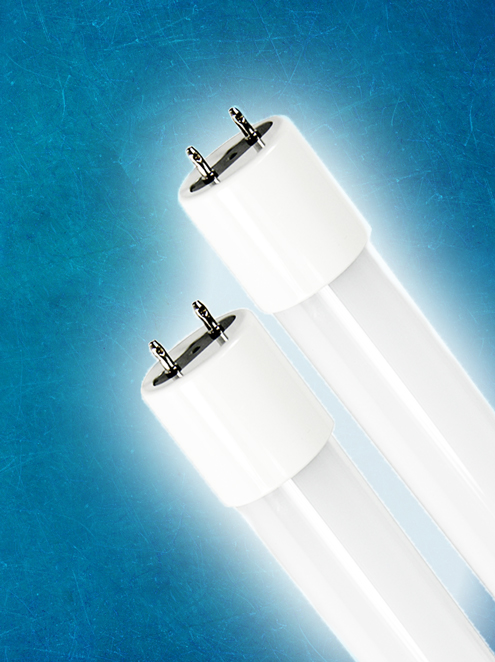
According to the US Energy Information Administration, lighting accounts for 10% of total energy consumption in commercial buildings. This includes schools, hospitals, warehouses, offices, and other industrial spaces. Limiting the amount of energy lost from lighting is just as simple as changing the lights. The most common type of lamp found in these buildings are fluorescent T8 lights. By simply replacing them with T8 LED light bulbs, you can easily reduce energy usage and costs right along with it.
What’s So Different?
When looking to replace fluorescent lamps with their LED counterparts, the first thing to check is wattage. For example, if you’re replacing a 32-watt fluorescent, a 17-watt LED T8 will do the trick. This tremendously cuts the energy being used from just the one fixture. Imagine the savings possible after replacing them all.
Next, do a comparison of lumens. While wattage measures the amount of energy being consumed, lumens accounts for the brightness of a bulb. Let’s take the same example from earlier. A T8 fluorescent that uses 32 watts of energy typically produces 2500 lumens of light. It’s LED equivalent, while using only 17 watts, produces 2200 lumens.
Additionally, T8 LED light bulbs have a lifetime rating of 50,000 hours, more than 3 times longer than 15,000 hour average lifespan of T8 fluorescent lights. Also keep in mind the warranty period. Generally, most fluorescent tubes have a 2-year warranty. Their LED counterparts are warrantied for as much as 5 years after the date of purchase.
Tube Types
There are two types of T8 LED tubes: Plug and Play, and Ballast Bypass. If you’re looking to do a quick replacement and install, you’ll want to go with the plug and play LEDs. These models do just as the title suggests. Rewiring isn’t necessary, and this reduces the maintenance costs. Installing Ballast bypass LEDs is slightly more complicated, and a professional electrician should be contracted to do the job. The existing ballast in the fixture will first need to be removed. These lamps work by using the voltage that flows directly to the socket.
All LED tubes come in either cool white or daylight color temperatures, matching the colors of the already installed lamps. T8 LED light bulbs allow for less energy use, greater energy savings, longer lamp life, and less maintenance. They are manufactured to make the switch both seamless, and well worth it in the long run.

Thanks for the info… LEDs are the best option when it comes to saving electricity. We all should do our bit for the sake of environment. Switching to LEDs is the best thing you could do. You’ll certainly notice the reduction in your monthly power bills.
Out of the two led options, which one will use less power. A drop-in 9W led will still have the ballast (noise/heat energy), and I wonder if it will actually end up consuming more power. I belive the bypass option will be more power saving. Thoughts?
Do plug and play style reduce the same amount of energy as the ballast bypass? How much of a draw is the ballast itself?
Thanks,
Dave
Hi, I have a fixture that I was given, with 2 – T8, 32w lamps. I would like to use the fixture with LED lamps but really up the lumen output for a much larger (11′ x 18′) kitchen. I bought GE replacement lamps but the lumens seem low for what I want at 1800 each. Are there higher lumen replacements I can get?
Is there a positive / negative side,or can u just install em
Hi Geno! To ensure they’re properly installed, it’s best to consult a professional electrician in your area.